Luxembourg
Welcome to Luxembourg
Nestled in the heart of Europe, Luxembourg is a captivating blend of old-world charm and modern sophistication. Often overlooked in favor of its larger neighbors, this tiny Grand Duchy offers travelers a unique experience: medieval castles perched on forested hills, cosmopolitan cities brimming with culture, and tranquil valleys lined with vineyards. Whether you’re a history buff, a nature lover, or a foodie in search of new flavors, Luxembourg promises an unforgettable escape.
Luxembourg is one of Europe’s smallest countries, bordered by Belgium, France, and Germany. Despite its compact size-just under 1,000 square miles-it boasts a remarkable diversity of landscapes and experiences. The capital, Luxembourg City, is a UNESCO World Heritage Site, famed for its dramatic fortifications, picturesque old town, and vibrant multicultural atmosphere. Beyond the city, rolling hills, dense forests, and charming villages await exploration, each offering a glimpse into the country’s rich heritage and contemporary life.
The nation is renowned for its high quality of life, multilingual population, and seamless blend of tradition and innovation. Public transportation is free throughout the country, making it easy and sustainable to explore every corner, from the fairy-tale castles of Vianden and Clervaux to the lush vineyards of the Moselle Valley and the hiking paradise of Müllerthal, known as “Little Switzerland” for its rocky landscapes and scenic trails.
Why Visit Luxembourg?
1.
Luxembourg is a land where fairy tales come to life. Medieval castles rise above misty valleys, ancient towns nestle beside winding rivers, and dense forests invite you to wander off the beaten path. Vianden Castle, one of Europe’s most beautiful feudal residences, offers panoramic views of the Ardennes, while the romantic ruins of Beaufort and the stately towers of Clervaux transport visitors back in time. The countryside is equally enchanting, with the Müllerthal Trail winding through mossy gorges, waterfalls, and quaint villages

2.
Luxembourg City is a treasure trove for history enthusiasts and urban explorers alike. Its dramatic setting atop sheer cliffs is matched by a labyrinth of cobbled streets, grand squares, and centuries-old fortifications. Explore the Casemates du Bock, an underground network of tunnels carved into solid rock, or stroll along the Chemin de la Corniche, often called “Europe’s most beautiful balcony,” for sweeping views of the Alzette Valley. The city’s vibrant cultural scene includes world-class museums, art galleries, and a lively calendar of festivals and events throughout the year.
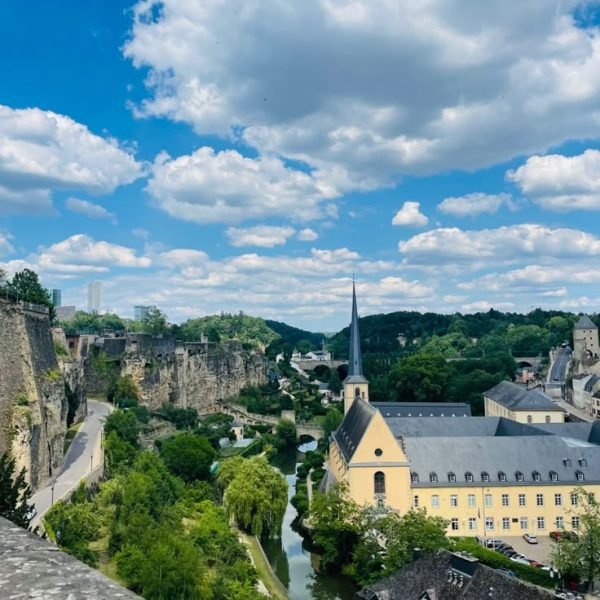
Planning Your Trip
Visa Information
Schengen Visa Zone
Luxembourg is a member of the Schengen Area, which means entry requirements are standardized with much of continental Europe. Citizens of EU and EFTA countries (such as Switzerland, Norway, Iceland, and Liechtenstein) do not need a visa to enter Luxembourg. They can travel freely with a valid national ID card or passport.
For travelers from many other countries, including the United States, Canada, Australia, New Zealand, Japan, and several others, short stays of up to 90 days within a 180-day period are visa-free for tourism, business, or family visits. However, starting in 2025, non-EU visitors from visa-exempt countries will need to apply for ETIAS (European Travel Information and Authorization System) authorization before arrival. This is a simple online process and is not a visa, but an additional security step.
Travelers from countries not covered by the visa waiver must apply for a Schengen visa in advance through the Luxembourg embassy or consulate in their home country. The application typically requires proof of accommodation, travel insurance, a return ticket, and sufficient financial means for the stay.
Key Points:
- Check if your nationality requires a Schengen visa or ETIAS authorization.
- Ensure your passport is valid for at least three months beyond your planned departure from the Schengen Area.
- Carry proof of onward travel, accommodation, and travel insurance.
Best Time to Visit
Luxembourg is a year-round destination, but your experience will vary depending on the season. Here’s how the year breaks down:
Spring (March to May):
Spring is one of the best times to visit Luxembourg. The countryside bursts into bloom, temperatures are mild (typically 3°C to 20°C), and crowds are minimal. This is an ideal time for hiking, cycling, and exploring castles surrounded by wildflowers. Cultural events, such as the Luxembourg City Film Festival and classical music concerts, add to the appeal.
Summer (June to August):
Summer is the peak tourist season. Expect long, sunny days with average temperatures between 15°C and 25°C. The country’s lush landscapes are at their best, and outdoor activities abound: hiking in Müllerthal, kayaking on the Sûre River, and cycling through the Moselle vineyards. The calendar is packed with festivals, including Luxembourg National Day in June and the lively Blues’n’Jazz Rallye in July. However, popular spots like Vianden Castle and the capital can get crowded, and accommodation prices rise, so book early for the best deals.
Autumn (September to November):
Autumn is a tranquil, picturesque time to visit. The forests and vineyards turn golden, temperatures remain comfortable, and crowds thin out. This is prime season for wine tasting in the Moselle Valley and enjoying harvest festivals. September and October are especially pleasant, with mild weather and vibrant scenery. November marks the start of the Christmas season, with festive markets and twinkling lights appearing across the country.
Winter (December to February):
Winter brings a quieter, more intimate atmosphere. The Ardennes region often sees snowfall, creating opportunities for winter sports like skiing and snowshoeing. Luxembourg City transforms with Christmas markets, festive lights, and seasonal treats. While some attractions have reduced hours, museums and cultural events continue, and the lack of crowds means you can enjoy the country’s highlights at a relaxed pace.
Summary Table: Best Times to Visit
Season | Weather | Activities & Highlights | Crowds & Costs |
Spring | Mild, blooming | Hiking, festivals, fewer crowds | Low to moderate |
Summer | Warm, sunny | Outdoor sports, festivals, vibrant nightlife | High |
Autumn | Mild, colorful | Wine tasting, harvest festivals, hiking | Low to moderate |
Winter | Cold, festive | Christmas markets, winter sports | Low |
Getting To and Around
Getting To Luxembourg
By Air:
Luxembourg Airport (Findel) is the country’s main international gateway, located just 6 km from Luxembourg City. It’s well connected to major European hubs such as Frankfurt, Paris, Amsterdam, London, and Zurich. Budget airlines and flag carriers both operate here, making it easy to find flights from across Europe.
By Train:
Luxembourg is seamlessly connected to neighboring countries by high-speed and regional trains. The central station in Luxembourg City is a hub for routes from Paris (TGV, about 2 hours), Brussels (InterCity, about 3 hours), and Germany (via Trier, Koblenz, and beyond). Trains are comfortable, reliable, and a scenic way to arrive.
By Car:
Driving to Luxembourg is straightforward, thanks to excellent highways from Belgium, France, and Germany. The country’s compact size makes it ideal for road trips, and border crossings within the Schengen Area are usually seamless.
By Bus:
International buses connect Luxembourg with cities such as Brussels, Frankfurt, and Paris. These are often the most budget-friendly option, though slower than trains or flights.
Getting Around Luxembourg
Free Public Transport:
Luxembourg is the first country in the world to offer free nationwide public transport. All trains, trams, and buses within the country are free for residents and visitors alike. This makes exploring the capital, countryside, and even remote villages easy and cost-effective.
Trains:
The national rail network is efficient and connects Luxembourg City with major towns, the Ardennes, the Moselle Valley, and the Müllerthal region. Trains are modern, punctual, and comfortable.
Buses and Trams:
An extensive bus network covers the entire country, including rural areas and tourist attractions. Luxembourg City also has a modern tram system, making it easy to get around the capital.
Cycling:
Luxembourg is bicycle-friendly, with dedicated bike paths and scenic routes, especially along the Moselle River and in the Müllerthal region. Many towns offer bike rentals, and cycling is a great way to explore vineyards, castles, and countryside at your own pace.
Taxis and Rideshares:
Taxis are available but can be expensive, especially for longer journeys. Rideshare services operate in the capital and some larger towns.
Car Rental:
Renting a car is a good option if you want to explore remote villages or the Ardennes at your own pace. Roads are well maintained, and traffic is generally light outside rush hours in the capital.
Walking:
Luxembourg’s cities and towns are compact and pedestrian-friendly. Many of the capital’s main sights are within walking distance, and hiking trails crisscross the countryside for those who want to explore on foot.
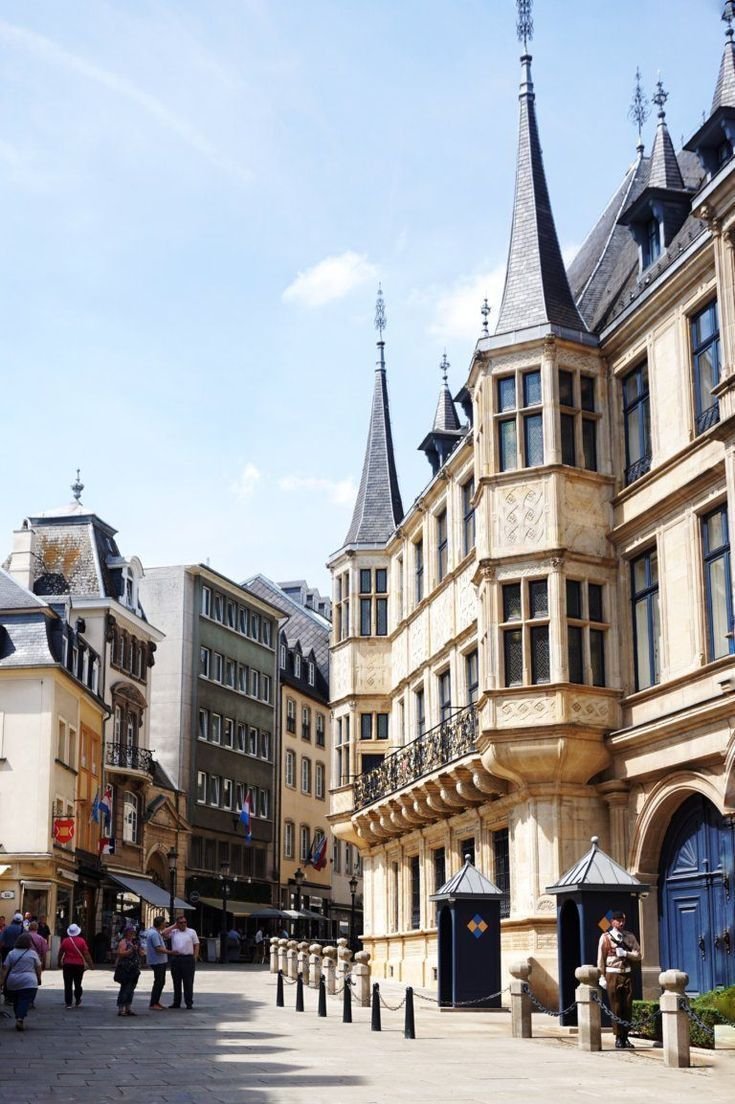
Accommodation
Luxembourg’s accommodation landscape caters to every traveler’s need, from luxury hotels in the capital to charming guesthouses in the countryside, and modern apartments for longer stays.
Hotels
Luxembourg City, the capital, is home to many high-end and boutique hotels that combine historic charm with modern comforts. For example, the Sofitel Luxembourg Europe is a contemporary 5-star hotel offering elegant rooms, fine dining restaurants, and wellness facilities such as a fitness center. It’s ideal for travelers who want a luxurious and convenient base in the city center.
Other notable hotels include Hotel Le Place d’Armes, known for its superb service and central location near the historic old town, and Le Royal Hotels & Resorts, offering a blend of classic style and modern amenities. Many hotels provide free WiFi, stylish interiors, and easy access to Luxembourg’s top attractions.
For those seeking a more intimate experience, La Pipistrelle Hotel is housed in a historic building with distinct design touches, offering cozy rooms and a welcoming atmosphere.
Apartments and Serviced Suites
For travelers who prefer more space or plan an extended stay, Luxembourg offers numerous serviced apartments and suites. Properties like Chéri’s aparts in the Bonnevoie district provide fully equipped apartments with amenities such as gardens, washing machines, and city views, making them perfect for families or business travelers.
Other options include Pétrusse Élite Suites, which offer panoramic views of Luxembourg City, and Core Luxembourg City-Serenity Creek, featuring balconies and modern comforts. These apartments often come with kitchen facilities, giving guests the flexibility to self-cater.
Budget and Mid-Range Options
Despite Luxembourg’s reputation for luxury, budget-conscious travelers can find affordable accommodations as well. There are hotels and guesthouses offering competitive rates, some as low as €25 per night, especially outside the city center or during off-peak seasons. Booking platforms showcase a wide range of options across the country, from Niederanven to Bascharage and Belval, ensuring that visitors can find a comfortable place within their budget.
University Residences
For students or visitors connected with academic institutions, the University of Luxembourg offers student residences in various locations such as Esch-sur-Alzette, Belvaux, and Luxembourg City itself. These residences provide affordable, functional accommodation, though availability is limited and prioritized for students.
Tips for Booking Accommodation
- Book well in advance, especially for peak seasons like summer and during major events or festivals.
- Consider staying outside the city center if you want a quieter experience and lower prices; Luxembourg’s excellent public transport makes commuting easy.
- Check for free WiFi and included amenities such as breakfast or parking.
- Explore apartments if you prefer more independence or are traveling with family.
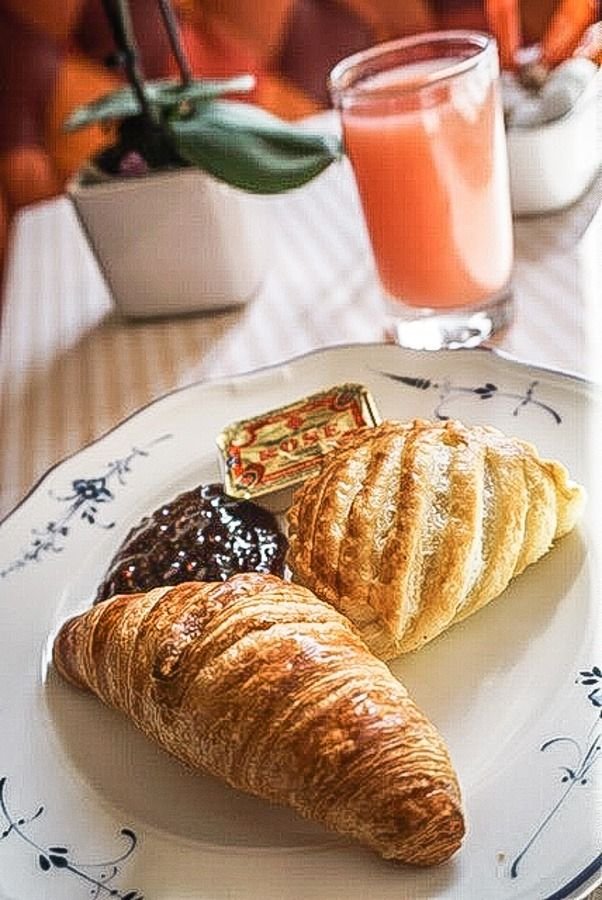
Food and Drink
Luxembourg’s culinary scene is a delightful reflection of its multicultural heritage, blending French finesse, German heartiness, and Belgian comfort. The country’s small size belies the richness and variety of its food and drink offerings.
Traditional Luxembourgish Cuisine
When dining in Luxembourg, don’t miss classic local dishes that showcase hearty flavors and fresh ingredients. Some of the must-try specialties include:
- Judd mat Gaardebounen: Smoked pork collar served with broad beans, a beloved national dish that combines smoky and earthy tastes.
- Gromperekichelcher: Crispy potato pancakes seasoned with herbs and onions, often enjoyed as street food or appetizers.
- Bouneschlupp: A traditional green bean soup made with potatoes, bacon, and onions, perfect for colder days.
- F’rell am Rèisleck: Trout cooked in Riesling wine, highlighting the country’s excellent freshwater fish and local wines.
Dining in Luxembourg City
Luxembourg City offers a vibrant dining scene ranging from Michelin-starred restaurants to cozy bistros and international eateries. The city’s multicultural population ensures a variety of cuisines, including Italian, Asian, Middle Eastern, and more.
For a refined experience, many restaurants in the city center serve contemporary takes on Luxembourgish and French cuisine, often paired with local wines or craft beers. The Place d’Armes area is particularly popular for its lively atmosphere and numerous cafés and restaurants with outdoor terraces.
Moselle Valley Wine and Food
The Moselle Valley, renowned for its vineyards, is a must-visit for wine lovers. This region produces some of Luxembourg’s finest white wines, especially Riesling, Pinot Gris, and Auxerrois. Many wineries offer tastings and cellar tours, where you can sample crisp, aromatic wines alongside local delicacies.
The valley’s restaurants often feature menus that complement the wines, such as freshwater fish, charcuterie, and seasonal vegetables. Pairing wine with regional dishes enhances the gastronomic experience and offers insight into Luxembourg’s agricultural traditions.
Markets and Street Food
Luxembourg’s weekly markets are great places to taste local produce, cheeses, breads, and pastries. The capital’s central market, held near Place Guillaume II, is lively and colorful, offering fresh fruits, vegetables, meats, and artisanal goods.
Street food options like flammekueche (a thin, crispy tart topped with cream, onions, and bacon) and Bretzel (soft pretzels) are popular snacks that showcase regional flavors.
Sweet Treats and Pastries
Luxembourg’s bakeries offer delightful pastries and desserts. The Quetschentaart, a plum tart made with fresh seasonal fruit, is a local favorite. Other sweet treats include almond cakes, honey pastries, and buttery croissants that reflect French influence.
Drinks
- Wine: Luxembourg’s Moselle wines are light, fresh, and perfect for pairing with meals or enjoying on their own.
- Beer: The country has a growing craft beer scene, with breweries producing a range of styles from traditional lagers to innovative ales.
- Spirits: Local distilleries produce fruit brandies and herbal liqueurs, often enjoyed as digestifs.
- Coffee and Tea: Cafés serve excellent coffee, often enjoyed leisurely with a pastry or cake.
Dining Tips
- Make reservations for popular restaurants, especially during weekends and festivals.
- Try a wine tasting tour in the Moselle Valley to experience local viticulture firsthand.
- Explore smaller towns and villages for authentic, family-run restaurants serving traditional dishes.
- Don’t hesitate to ask locals for their favorite dining spots; Luxembourg’s hospitality is warm and welcoming.

Must-See Attractions
- Luxembourg City’s Old Quarter and Chemin de la Corniche
Often dubbed “Europe’s most beautiful balcony,” the Chemin de la Corniche is a historic promenade offering breathtaking panoramic views over the Alzette River valley and the Grund district below. Walking this scenic path, you’ll pass alongside ancient fortifications and charming old houses, immersing yourself in the city’s rich history and stunning architecture. The Old Quarter itself is a UNESCO World Heritage site, filled with cobbled streets, quaint squares, and historic landmarks that tell the story of Luxembourg’s strategic importance over the centuries.
- Casemates du Bock and Pétrusse Casemates
These underground tunnels are among Luxembourg’s most fascinating historical sites. Carved into the rocky cliffs beneath Luxembourg City, the Casemates du Bock and the Pétrusse Casemates formed a vast network of defense tunnels used from the 17th century to protect the city. Exploring these labyrinthine passages gives you a glimpse into military history, with old gunpowder rooms, secret chambers, and breathtaking views from the fortress terraces.
- Grand Ducal Palace
The official residence of Luxembourg’s Grand Duke, this Renaissance-style palace stands as a symbol of the country’s monarchy and heritage. While the palace is still used for official functions, visitors can join guided tours during the summer months (typically mid-July to early September) to admire its elegant interiors and learn about Luxembourg’s royal traditions.
- Adolphe Bridge
An iconic landmark of Luxembourg City, the Adolphe Bridge is a striking example of early 20th-century engineering. Spanning the Pétrusse valley, this majestic stone arch bridge offers fantastic photo opportunities and connects the city’s historic center with the more modern districts.
- National Museum of History and Art
For those interested in Luxembourg’s cultural and artistic heritage, this museum houses extensive collections ranging from archaeology and fine arts to ethnography. It provides a comprehensive overview of the country’s past and present through carefully curated exhibitions.
- Bourscheid Castle
Perched high on a plateau surrounded by rivers and forests, Bourscheid Castle is one of Luxembourg’s largest and most impressive medieval fortresses. Visitors can explore its well-preserved towers, walls, and courtyards while enjoying panoramic views of the Ardennes countryside. The castle’s dramatic setting makes it a favorite for photographers and history enthusiasts alike.
- The Müllerthal Region (Little Switzerland) and Berdorf
Known as Luxembourg’s “Little Switzerland,” the Müllerthal region is famed for its unique rocky landscapes, dense forests, and scenic hiking trails. The town of Berdorf serves as a gateway to this natural wonderland, offering opportunities for hiking, rock climbing, and cycling amid striking sandstone formations and lush greenery.
- Upper Sûre Natural Park and Esch-sur-Sûre
This vast nature reserve features plateaus, narrow valleys, and a picturesque reservoir. It’s a haven for wildlife and outdoor lovers, with activities ranging from hiking and kayaking to birdwatching. The charming village of Esch-sur-Sûre, with its medieval castle ruins and quaint streets, adds cultural interest to the natural beauty.
- Luxembourg American Cemetery Memorial
This serene and solemn site honors over 5,000 American soldiers who lost their lives during World War II, including General George S. Patton. The beautifully maintained grounds and informative displays provide a moving tribute and a place for reflection.
- Place Guillaume II and the City Market
A lively square in Luxembourg City, Place Guillaume II hosts the impressive Town Hall and is famous for its weekly market, where locals sell fresh flowers, plants, and regional produce. The square is surrounded by cafes and restaurants, making it a perfect spot to soak up local life.
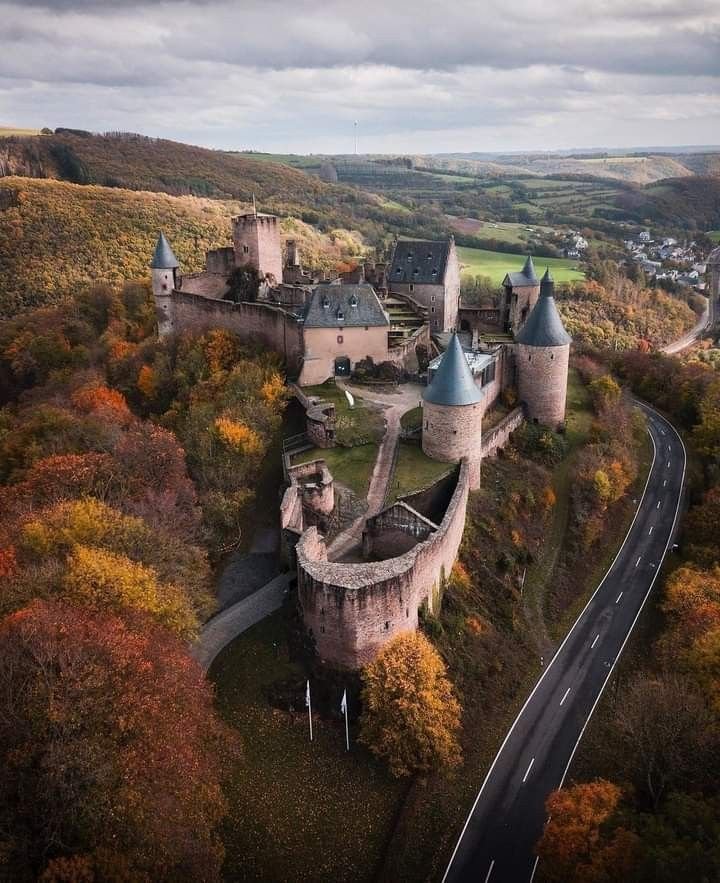
Must-Do Activities
- Stroll the Historic Streets and Bridges
Walking through Luxembourg City’s historic center is a must. Wander the cobbled streets, cross iconic bridges like the Adolphe and the Passerelle, and explore neighborhoods such as the Grund, which lies in the valley below the city center. This leisurely activity allows you to soak in the city’s atmosphere, discover hidden courtyards, and enjoy stunning views.
- Explore the Casemates Underground
Venture into the Casemates du Bock and Pétrusse tunnels for a unique experience. The cool, dimly lit corridors take you back in time, revealing the city’s strategic military defenses. Guided tours provide fascinating insights into the construction, history, and wartime roles of these tunnels.
- Hike the Müllerthal Trail
For nature lovers, hiking the Müllerthal Trail is an unforgettable activity. This well-marked trail covers about 112 kilometers through Luxembourg’s “Little Switzerland,” featuring enchanting rock formations, waterfalls, and dense forests. Choose shorter sections if you prefer a half-day outing or tackle the full trail for a multi-day adventure.
- Wine Tasting in the Moselle Valley
Luxembourg’s Moselle region is renowned for its crisp white wines, especially Riesling and Pinot Gris. Spend a day cycling or driving along the Moselle River, stopping at family-run wineries for tastings and cellar tours. Pair your wine with local specialties in cozy riverside villages for a true taste of Luxembourg’s terroir.
- Visit Festivals and Events
Luxembourg hosts a variety of cultural events throughout the year. The Echternach Dancing Procession, held annually in May, is a UNESCO-listed tradition blending religious devotion with lively folk dancing. The Schueberfouer, a large funfair in Luxembourg City, takes place in late summer and offers rides, games, and local food stalls. Attending these events provides a deep dive into Luxembourg’s vibrant cultural life.
- Discover Museums and Art Galleries
Spend time at the Grand Duke Jean Museum of Modern Art (Mudam) to see contemporary works by international artists. The National Museum of History and Art and the Luxembourg City History Museum also offer enriching experiences for those interested in the country’s past and artistic heritage.
- Kayaking and Outdoor Sports
The Upper Sûre Natural Park and the Sûre River are perfect for kayaking, canoeing, and fishing. The park’s diverse terrain also invites hiking, mountain biking, and birdwatching, making it a great destination for active travelers.
- Explore Castles Beyond the City
Besides Bourscheid, visit Vianden Castle, one of Europe’s most beautiful medieval castles, perched above the Our River. The castle hosts medieval festivals and reenactments, adding a lively dimension to your visit. Clervaux Castle, featuring the famous “Family of Man” photography exhibition, is another highlight.
- Sample Luxembourgish Cuisine
Engage your senses by tasting local dishes such as Judd mat Gaardebounen (smoked pork with broad beans) and Gromperekichelcher (potato pancakes). Pair your meals with Luxembourg’s excellent wines or craft beers for a full gastronomic experience.
- Relax in Parks and Gardens
Luxembourg City offers several beautiful green spaces, including the Municipal Park and the Botanical Gardens. These are perfect spots to unwind after sightseeing, enjoy a picnic, or simply watch the world go by.
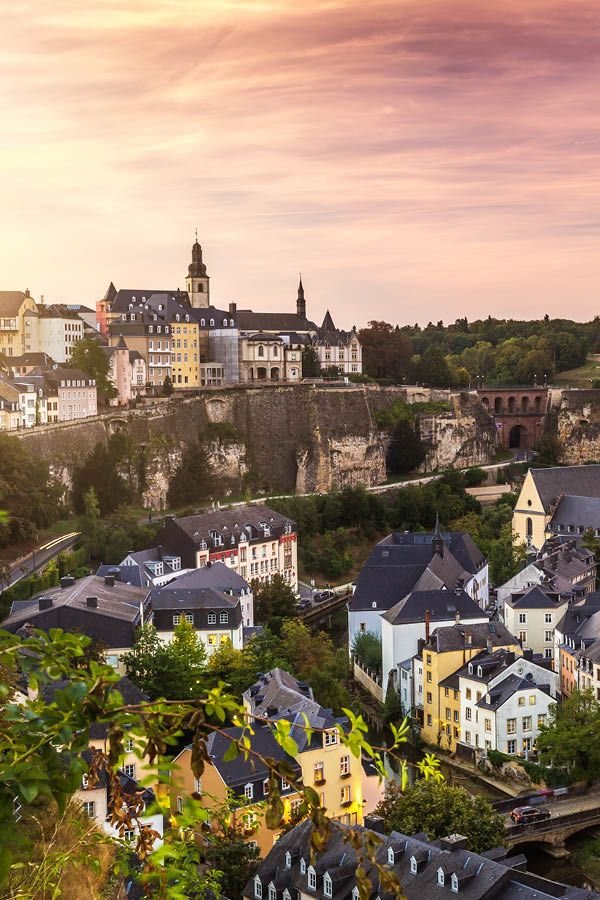
Travel Tips
Luxembourg, a small yet vibrant country nestled in the heart of Europe, offers visitors a unique blend of cultural richness, historical charm, and modern sophistication. To fully enjoy your trip in 2025, understanding local customs, language nuances, and safety practices will enhance your experience and help you connect respectfully with Luxembourgers. Here’s a detailed guide with essential travel tips covering safety advice, social etiquette, and language basics.
Safety Advice
Luxembourg is consistently ranked among the safest countries in Europe, boasting low crime rates and a stable political environment. Visitors can generally feel secure walking around cities and towns at any time of day. However, like in any travel destination, a few practical safety tips will ensure your trip remains trouble-free:
- Stay Alert in Crowded Places: While violent crime is rare, petty theft such as pickpocketing can occur in busy areas like markets, public transport hubs, and tourist sites. Keep your belongings secure, use bags with zippers, and avoid displaying expensive items openly.
- Use Official Transportation: Luxembourg offers free public transport nationwide, including trains, trams, and buses. These are safe, clean, and reliable. If you use taxis, opt for licensed companies or pre-booked rides to avoid scams.
- Follow Local Traffic Rules: If you rent a car or cycle, be aware that Luxembourg strictly enforces traffic laws. Speed limits, seatbelt use, and drink-driving regulations are rigorously applied. Pedestrians have the right of way at crosswalks.
- Emergency Numbers: In case of emergency, dial 112 for police, fire, or medical assistance. Operators are multilingual and quick to respond.
- Health Precautions: Luxembourg has excellent healthcare facilities. Travel insurance covering medical emergencies is recommended but not mandatory. Tap water is safe to drink everywhere.
- Respect Environmental Rules: Luxembourg places high importance on environmental protection. Follow recycling guidelines, avoid littering, and respect nature reserves to contribute positively to local sustainability efforts.
Local Customs
Understanding Luxembourg’s social customs will help you make a good impression and enjoy more meaningful interactions with locals. The culture reflects a blend of French, German, and Belgian influences, with a strong emphasis on politeness, formality, and respect.
Greetings and Social Interactions
- Handshake and Eye Contact: A firm handshake accompanied by direct eye contact is the standard greeting in both formal and informal settings. Among friends and family, three kisses on the cheeks (starting on the right cheek) are common, but only when you know people well.
- Use of Titles: Luxembourgers value formality, especially in initial meetings. Address people by their titles and last names (e.g., Monsieur Dupont or Frau Schmidt) unless invited to use first names.
- Punctuality: Being on time is a sign of respect in Luxembourg. Whether for business meetings, social gatherings, or appointments, punctuality is expected and appreciated.
- Privacy and Discretion: Luxembourgers tend to be reserved and value their privacy. Avoid overly personal questions early in conversations and respect boundaries. Once trust is established, they are warm and loyal friends.
Dining Etiquette
Meals are important social occasions in Luxembourg, and proper table manners are expected, especially in formal or business contexts.
- Wait to Be Seated: Remain standing until the host invites you to sit, and you may be shown to a specific seat.
- Utensil Use: Luxembourg follows Continental dining style-hold the fork in the left hand and the knife in the right. Use utensils for most foods, including sandwiches.
- Start Eating When the Host Does: Do not begin your meal until the host has started or given a signal such as “Bon appétit” or “Gudden Appetit.”
- Keep Hands Visible: Rest your wrists on the edge of the table rather than placing elbows on it or hiding hands in your lap.
- Family-Style Serving: Meals are often served family-style, so it’s polite to offer to pass dishes around.
- Finishing Your Plate: It is customary to finish everything on your plate. To signal you are done, lay your knife and fork parallel on the right side of your plate. If you are not finished, cross the knife and fork with the fork over the knife.
- Toasting: When toasting, make eye contact with each person and say “Santé” (French for health) or “Prost” (German for cheers) before sipping.
- Tipping: Service charges are usually included in restaurant bills, but leaving a 5-10% tip for good service is appreciated.
Gift-Giving and Visiting Homes
- When invited to a Luxembourgish home, it is polite to bring a small gift such as chocolates, wine, or flowers.
- Arrive on time; lateness is considered disrespectful.
- Offer to help with setting the table or clearing up after the meal, as this gesture is warmly received.
- Respect the host’s customs and follow their lead during meals and social interactions.
Dress Code
- Formal Settings: Luxembourgers dress conservatively and elegantly for business and formal occasions. Men typically wear suits and ties; women opt for dresses or skirt suits in muted colors.
- Casual Wear: In everyday life, casual attire such as jeans, sweaters, and sneakers is common and acceptable. However, avoid overly flashy or revealing clothing, especially in professional or religious settings.
- Special Occasions: For weddings, religious ceremonies, or cultural events, dressing smartly is expected.
Language Basics
Luxembourg is a multilingual country with three official languages: Luxembourgish (Lëtzebuergesch), French, and German. English is widely spoken, especially in business and tourist areas, but learning a few key phrases in the local languages will endear you to locals and enrich your experience.
Luxembourgish (Lëtzebuergesch)
Luxembourgish is the national language and a symbol of cultural identity. It is commonly spoken in daily life, especially among locals.
- Hello: Moien (pronounced “moy-en”)
- Goodbye: Äddi (pronounced “a-dee”)
- Please: Wann ech gelift (pronounced “vun ekh ge-lift”)
- Thank you: Merci (pronounced as in French)
- Yes: Jo (pronounced “yo”)
- No: Nee (pronounced “nay”)
French
French is widely used in administration, business, and official communications.
- Hello: Bonjour
- Goodbye: Au revoir
- Please: S’il vous plaît
- Thank you: Merci
- Yes: Oui
- No: Non
German
German is common in media and education and understood by many.
- Hello: Guten Tag
- Goodbye: Auf Wiedersehen
- Please: Bitte
- Thank you: Danke
- Yes: Ja
- No: Nein
English
English is widely spoken in tourist areas, hotels, and among younger generations. Most Luxembourgers working in hospitality and business will understand and speak English comfortably.
Final Tips for a Smooth Journey
- When in doubt, err on the side of politeness and formality.
- Observe and follow the lead of your hosts or locals in social situations.
- Respect local traditions and laws, including environmental practices.
- Carry a phrasebook or language app to help with communication.
- Enjoy the warmth and hospitality of Luxembourg’s people by showing genuine interest in their culture.
By embracing these travel tips on safety, customs, and language, your 2025 visit to Luxembourg will be smooth, respectful, and deeply rewarding. This small but sophisticated country welcomes visitors with open arms, inviting you to explore its rich heritage and modern charm with confidence and ease.

